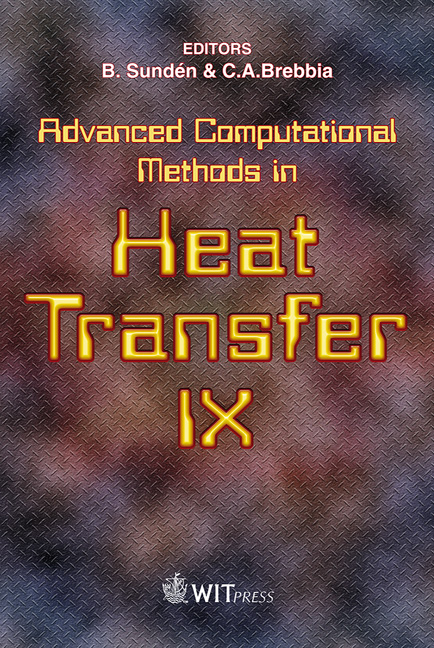An Interaction Of A Sonic Injection Jet With A Supersonic Turbulent Flow Approaching A Re-entry Vehicle To Atmosphere
Price
Free (open access)
Transaction
Volume
53
Pages
12
Published
2006
Size
841 kb
Paper DOI
10.2495/HT060071
Copyright
WIT Press
Author(s)
D. Sun & R. S. Amano
Abstract
A shock-interaction flow field generated by transverse sonic injection into a supersonic flow was simulated by solving the Favre-averaged Navier-Stokes equations using the weighted essentially non-oscillatory (WENO) schemes. Three-dimensional results indicate that there appear four pairs of vortices around the secondary injection. In the upstream of the square injection there exist two main recirculation regions and the primary vortex induces the horseshoe vortex region. After the secondary injection flow ejects from the square hole, it is forced by the supersonic main flow and then it becomes a pair of counter rotation vortices towards downstream. In the downstream there is a low-pressure region that conduces a pair of helical vortices. Keywords: supersonic flow, bow shock wave, horse-shoe vortex, CFD. 1 Introduction Shock-interaction flowfield generated from a sonic gaseous flow injected transversely into a supersonic freestream is encountered in practical applications such as space shuttle reentry atmosphere, rocket motor thrust vector control systems, supersonic combustion, high-speed flight vehicle reaction control jets, and gas-turbine cooling systems [1-3]. One example is the case when re-entry vehicles or reusable rockets enter atmosphere, its attitude has to be controlled to endure large aerodynamic heating. Because of a high angle of attack on re-entering, the flow separates from the control surface. If the jet is injected into a hypersonic flow, complicated interaction between the jet and the flow occurs. It results in boundary layer separation, shock waves, and vortices, which are
Keywords
supersonic flow, bow shock wave, horse-shoe vortex, CFD.





